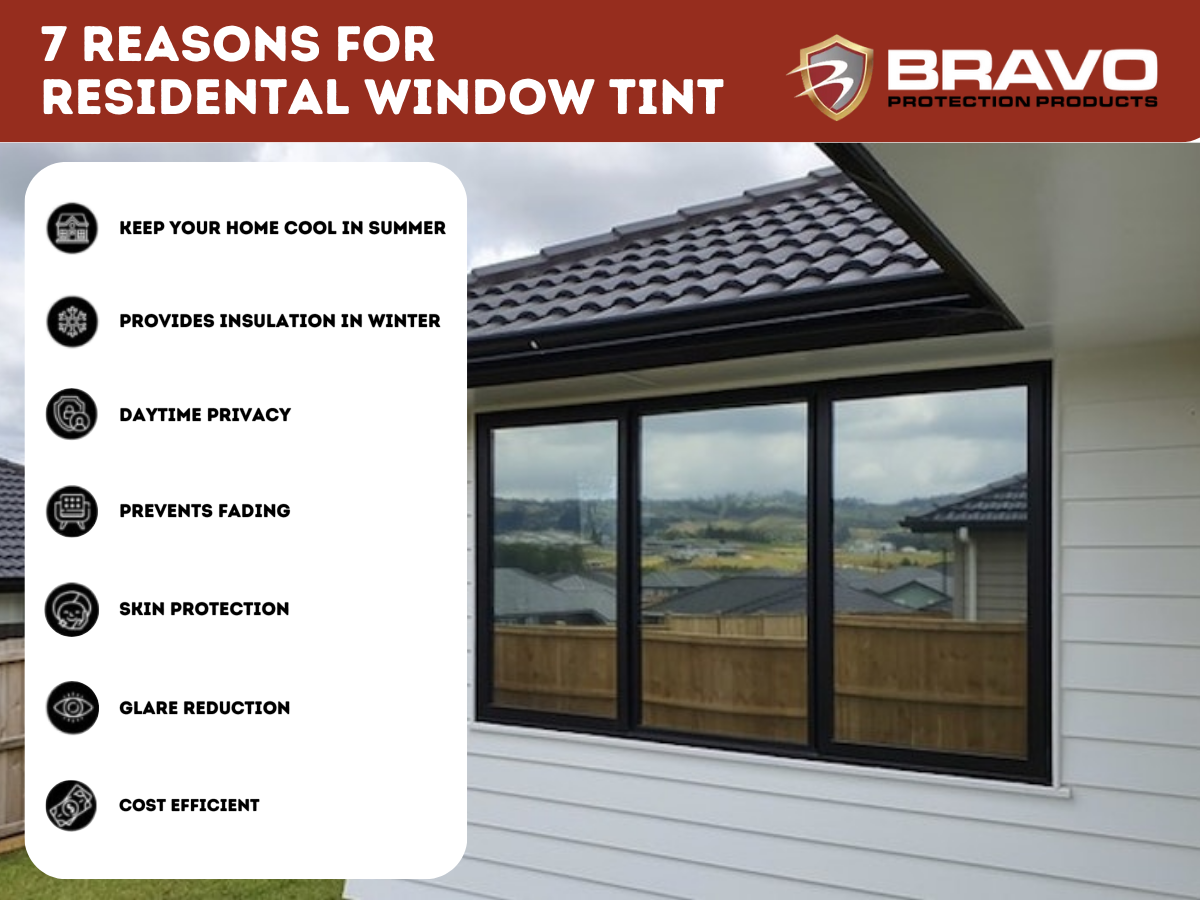Exactly How Residential Window Tinting Improves Your Home's Energy Effectiveness
Residential window tinting presents an engaging remedy for house owners looking for to enhance power performance within their space. By applying specialized movies to home windows, it successfully lowers warmth transfer, thus maintaining interior temperature levels and reducing the demand for extreme heating or cooling. This not just stops energy usage but likewise provides an extra comfy atmosphere by reducing glow. Understanding the nuances of how tinting jobs and choosing the proper kind for your home can be pivotal. Curiously, what variables should one consider before making this financial investment?
Understanding Home Window Tinting
Comprehending window tinting is necessary for home owners seeking to improve both comfort and energy efficiency in their home. Residential Window Tint. Home window tinting entails the application of a slim film to the interior or outside surface area of glass windows. This movie can significantly modulate the amount of sunshine and warm that goes into a home, thus influencing indoor climate problems
There are different types of window tinting movies offered, each with unique homes. The performance of home window tinting is frequently determined by its Visible Light Transmission (VLT) percentage, which shows exactly how much light can pass via the film.
Benefits of Power Efficiency
Window tinting not only enhances aesthetics yet likewise plays a significant function in enhancing power effectiveness within household rooms. By reducing warmth transfer via home windows, colored movies develop a more secure indoor environment, which can lead to significant decreases in power consumption for home heating and cooling. This energy effectiveness converts into lower energy costs, offering house owners with significant long-lasting cost savings.

Furthermore, window tinting boosts the comfort of living areas. By reducing glow and blocking unsafe UV rays, colored windows develop a more positive setting, which can lead to enhanced health for residents. The defense versus UV rays also aids protect furnishings and flooring from fading, adding to the long life of household things.
Exactly How Tinting Functions
Tinting films run with a combination of sophisticated materials and modern technologies made to regulate the quantity of solar energy getting in a home. Mostly composed of polyester, these movies often integrate ceramic or metallic particles that soak up and show warmth. This twin ability permits them to substantially reduce the infiltration of ultraviolet (UV) rays and infrared radiation while permitting noticeable light to travel through.
The performance of home window tinting is measured by its solar warm gain coefficient (SHGC), which suggests how much solar power is transmitted with the home window. Reduced SHGC worths are more effective as they represent greater heat denial. In addition, home window colors can include a variety of shades, permitting homeowners to personalize their visual preferences while boosting energy effectiveness.
Additionally, these films act as an obstacle, protecting against warmth loss during colder months by reflecting indoor warmth back into the space. This thermal insulation effect complements the cooling benefits gained during warmer months, contributing to a balanced indoor climate year-round. By taking care of solar power successfully, domestic window tinting not just boosts convenience but also plays an essential duty in reducing power usage and decreasing utility costs.
Picking the Right Tint

There are numerous kinds of window movies readily available, including dyed, metalized, and ceramic. Dyed films are cost-effective yet may have restricted longevity. Metalized films provide far better heat rejection however can disrupt digital signals. Ceramic films provide outstanding warmth control without endangering presence and are extremely resilient, making them a prominent option.
Visible light transmission (VLT) is one more essential factor, as it shows the amount of natural light that can go through the tinted glass. House owners must pick a tint with a VLT that matches their lights choices while still supplying sufficient glare reduction.
In addition, assessing the solar warmth gain coefficient (SHGC) can help figure out exactly how well a tint their explanation can obstruct heat from sunlight. A reduced SHGC shows much better heat control, eventually improving power efficiency.
Setup and Upkeep Tips
Proper installation and upkeep are important components in taking full advantage of the benefits of property home window tinting. Specialists also utilize specialized tools and methods, which can improve the longevity and performance of the tint.
Adhering to installation, upkeep is vital to prolong the life of the home window movie. It is suggested to wait at least 30 days prior to cleaning the colored windows to allow the sticky to heal completely.
In addition, routine inspections are beneficial. Inspect for any type of peeling or bubbling, which could show improper setup or put on with time - Residential Window Tint. Resolving these concerns promptly can avoid further damages and keep power efficiency. By sticking to these setup and maintenance pointers, homeowners can ensure their home window tinting proceeds to give substantial power cost see this page savings and convenience for several years ahead.
Conclusion
In final thought, property home window tinting serves as a reliable remedy for enhancing energy performance within homes. By minimizing warm transfer and blocking hazardous UV rays, window films add to decrease power usage and enhanced interior convenience.
Home window tinting entails the application of a thin movie to the inside or outside surface area of glass windows. By decreasing warm transfer via windows, colored films create an extra steady indoor environment, which can lead to substantial decreases in power usage for heating and cooling.The efficiency of home window tinting is measured by its solar warmth gain coefficient (SHGC), which shows how much solar power is sent through the window. By continue reading this managing solar power successfully, household home window tinting not only enhances comfort yet also plays a crucial role in minimizing power consumption and reducing utility costs.
By decreasing warm transfer and obstructing harmful UV rays, home window films add to lower energy consumption and enhanced indoor convenience.